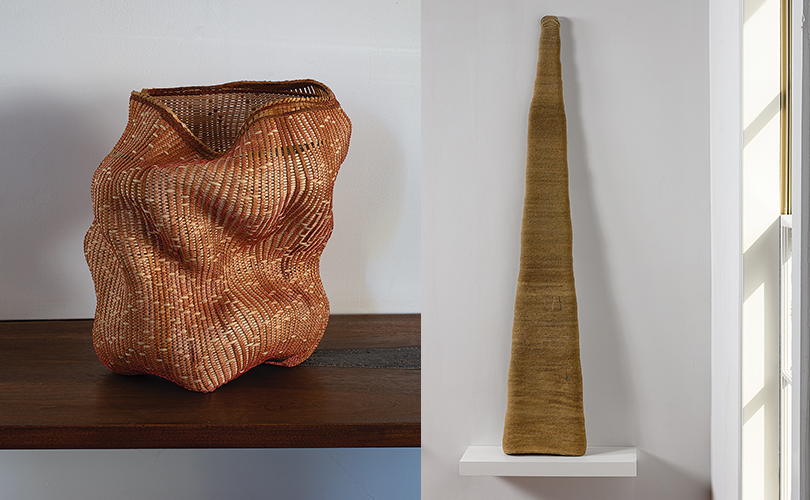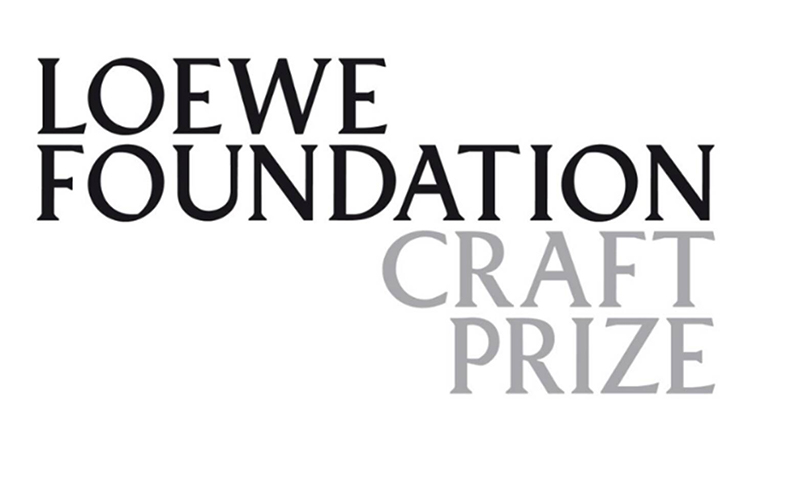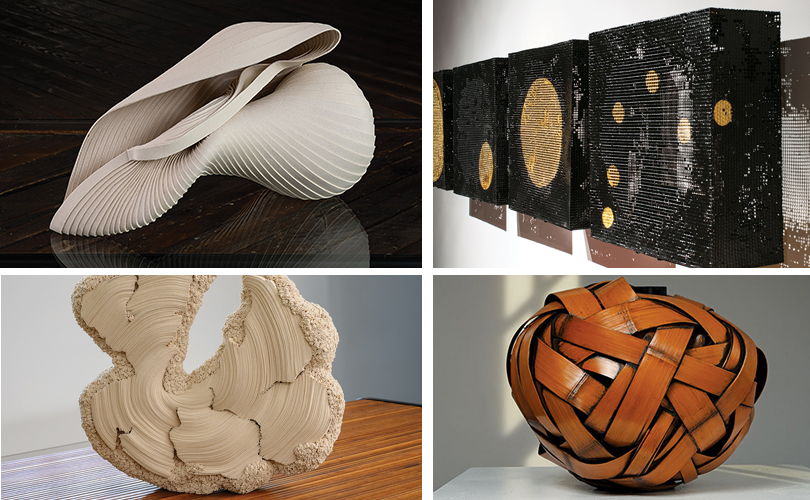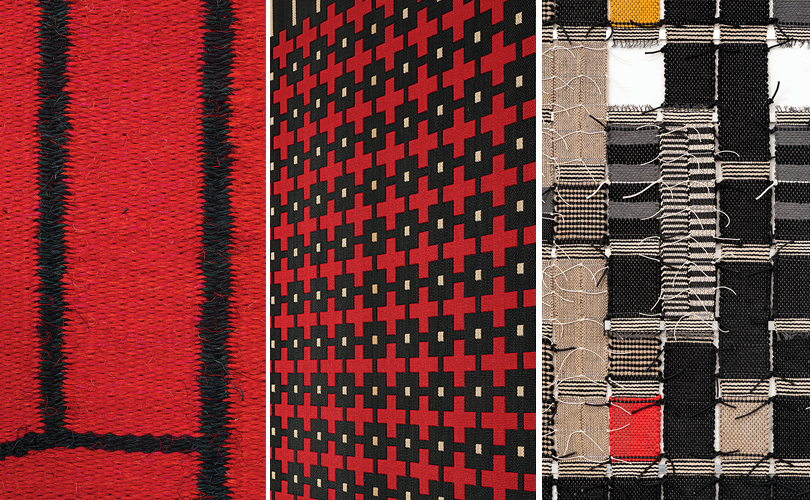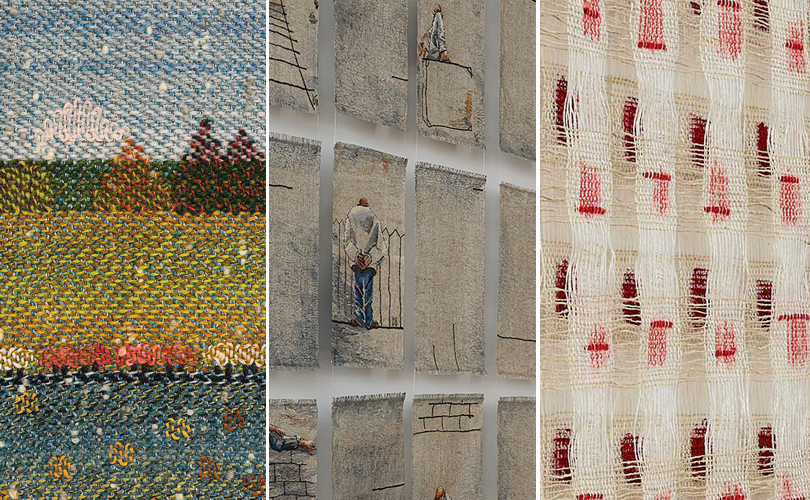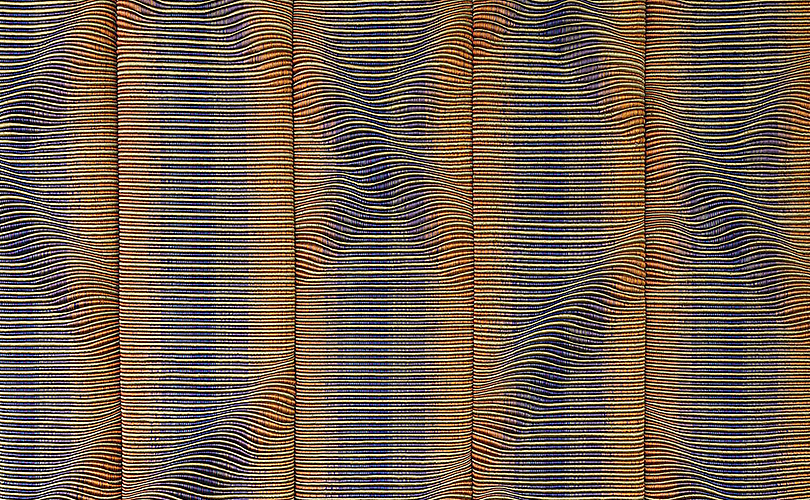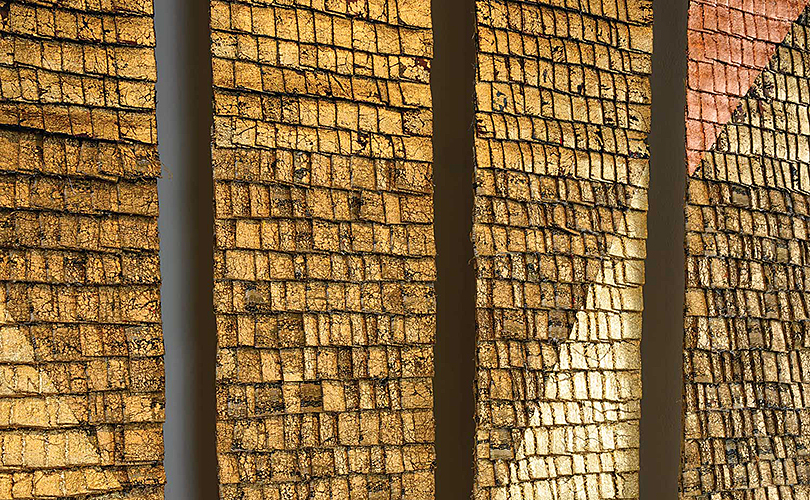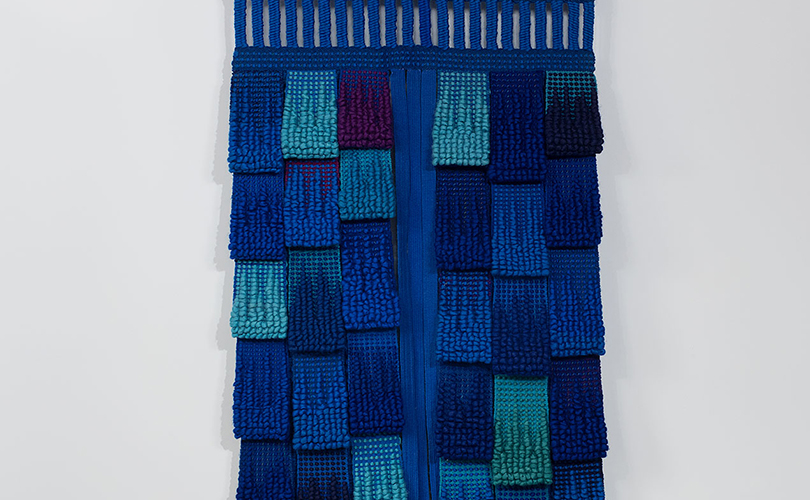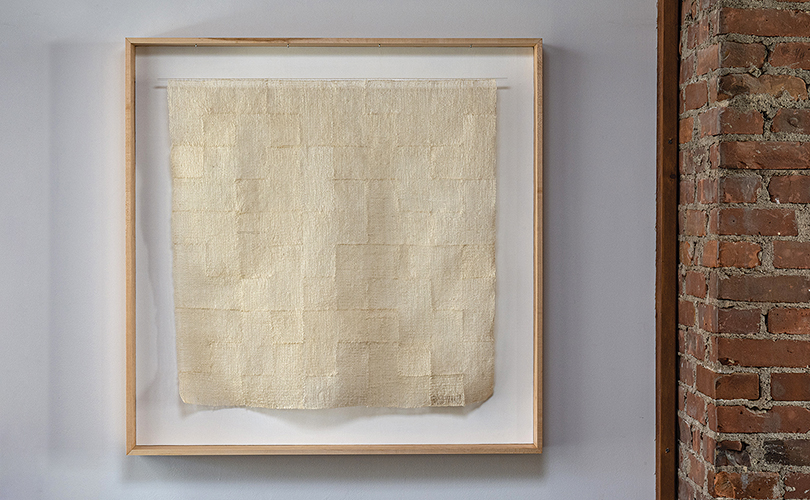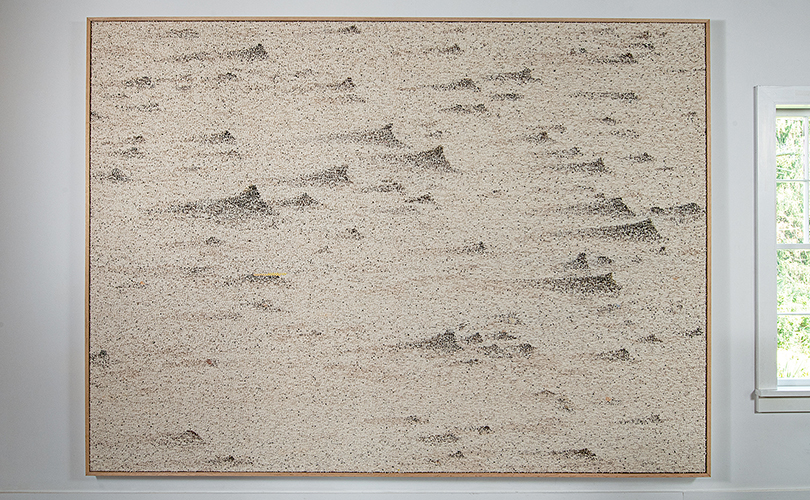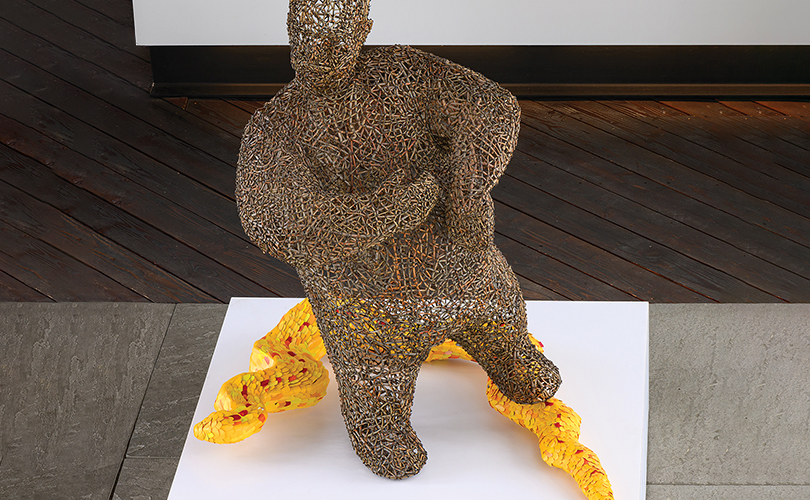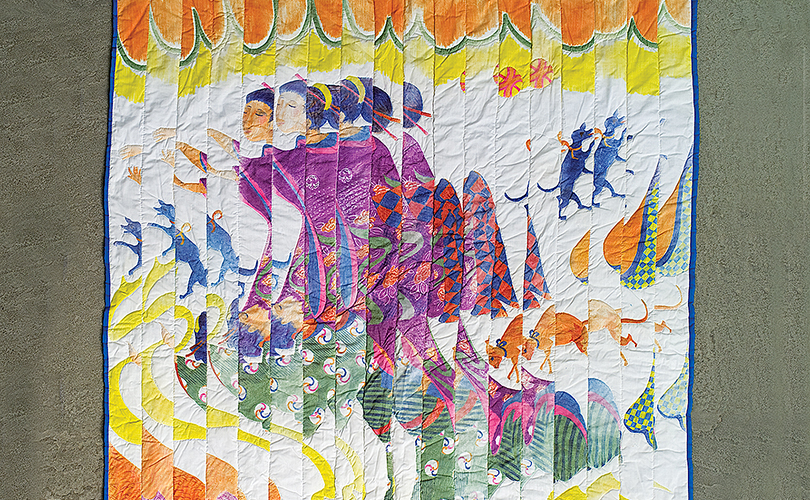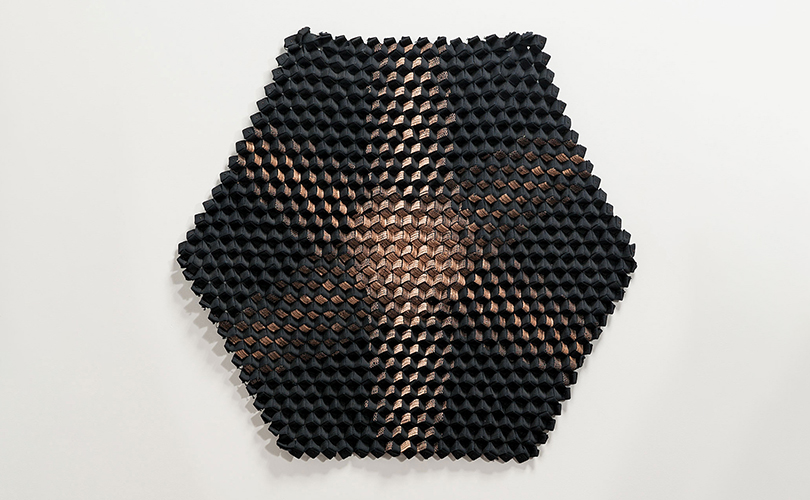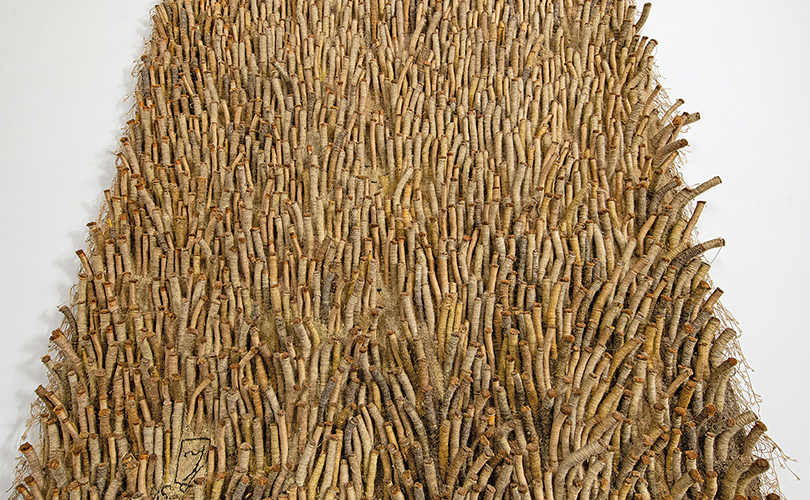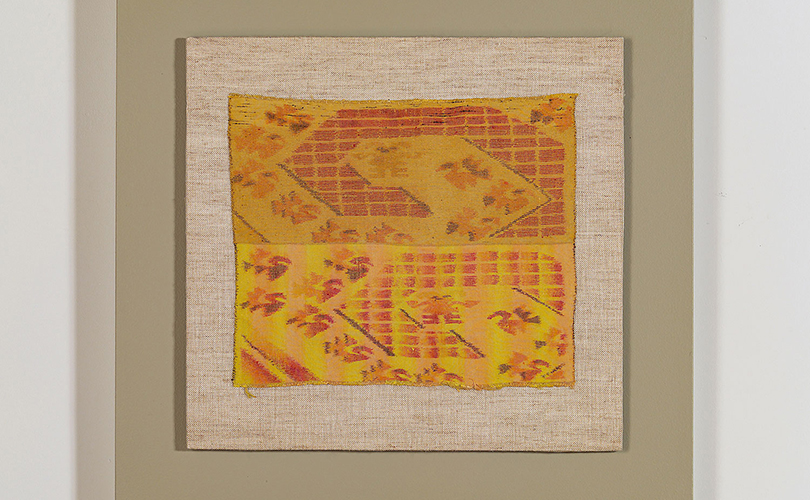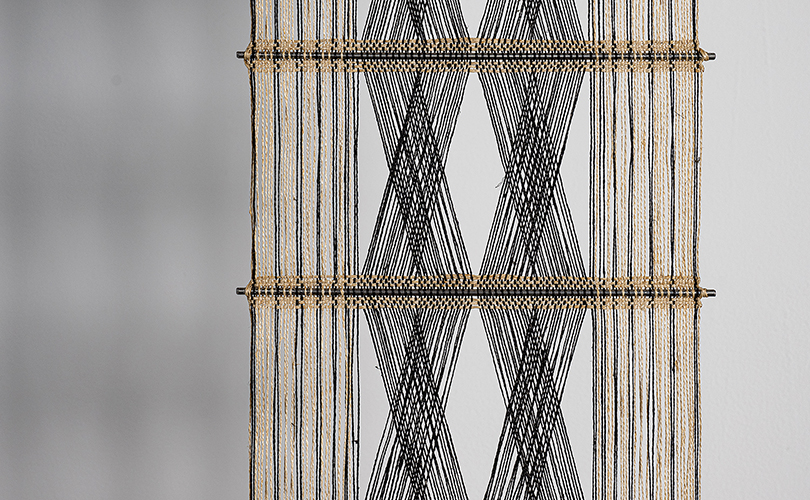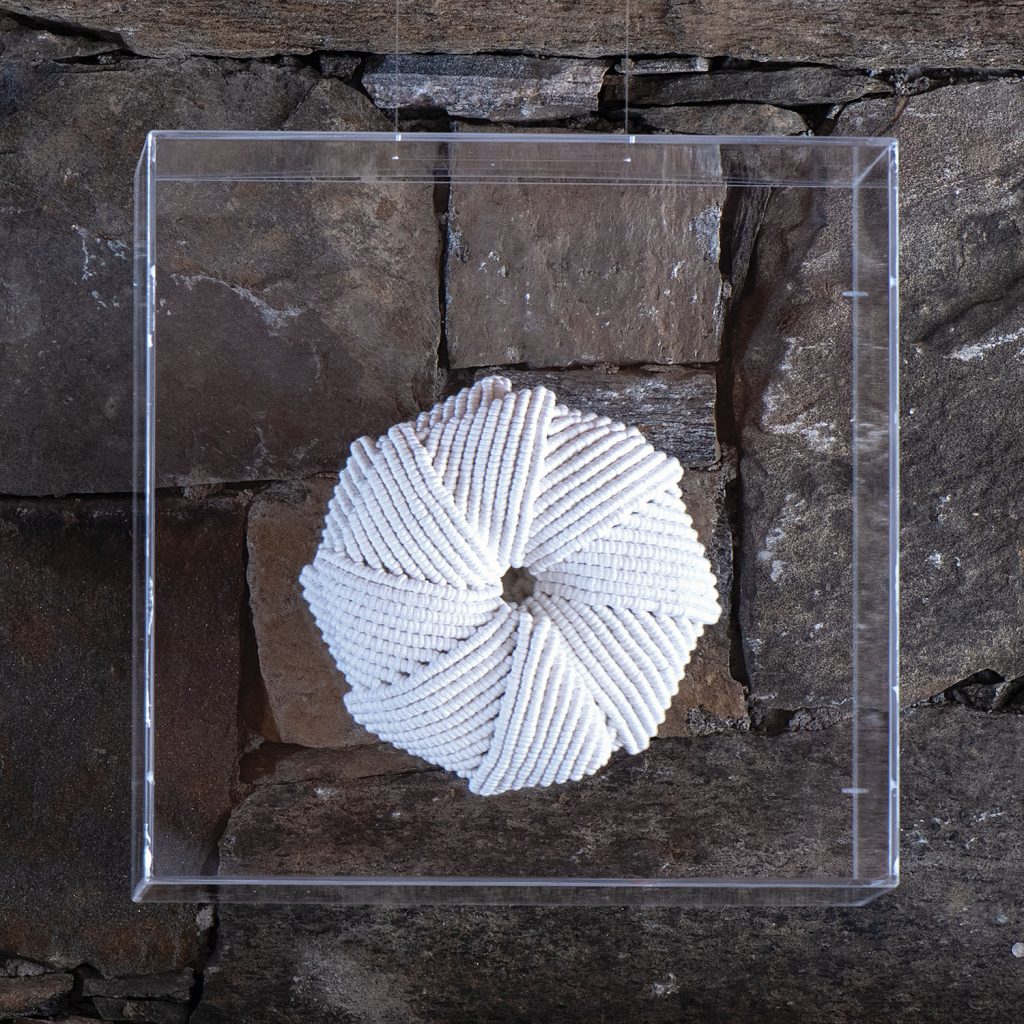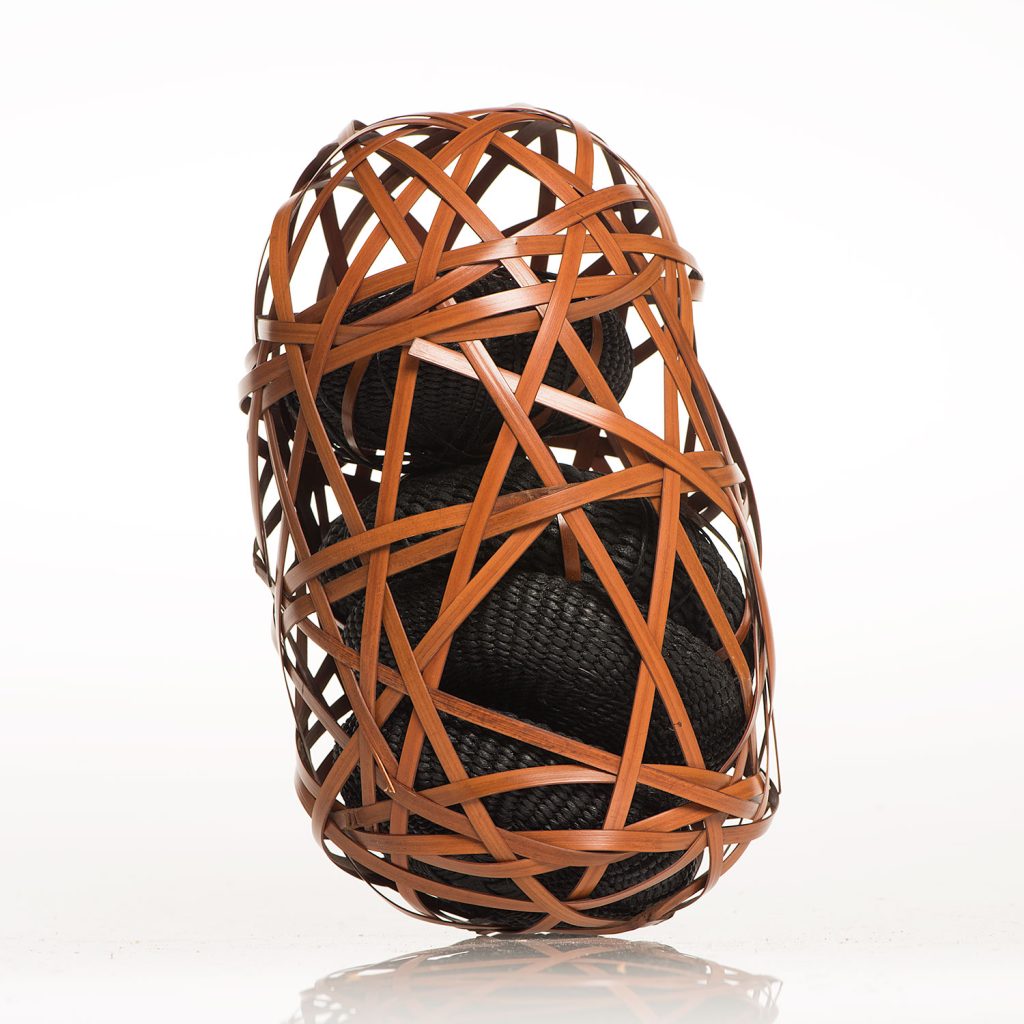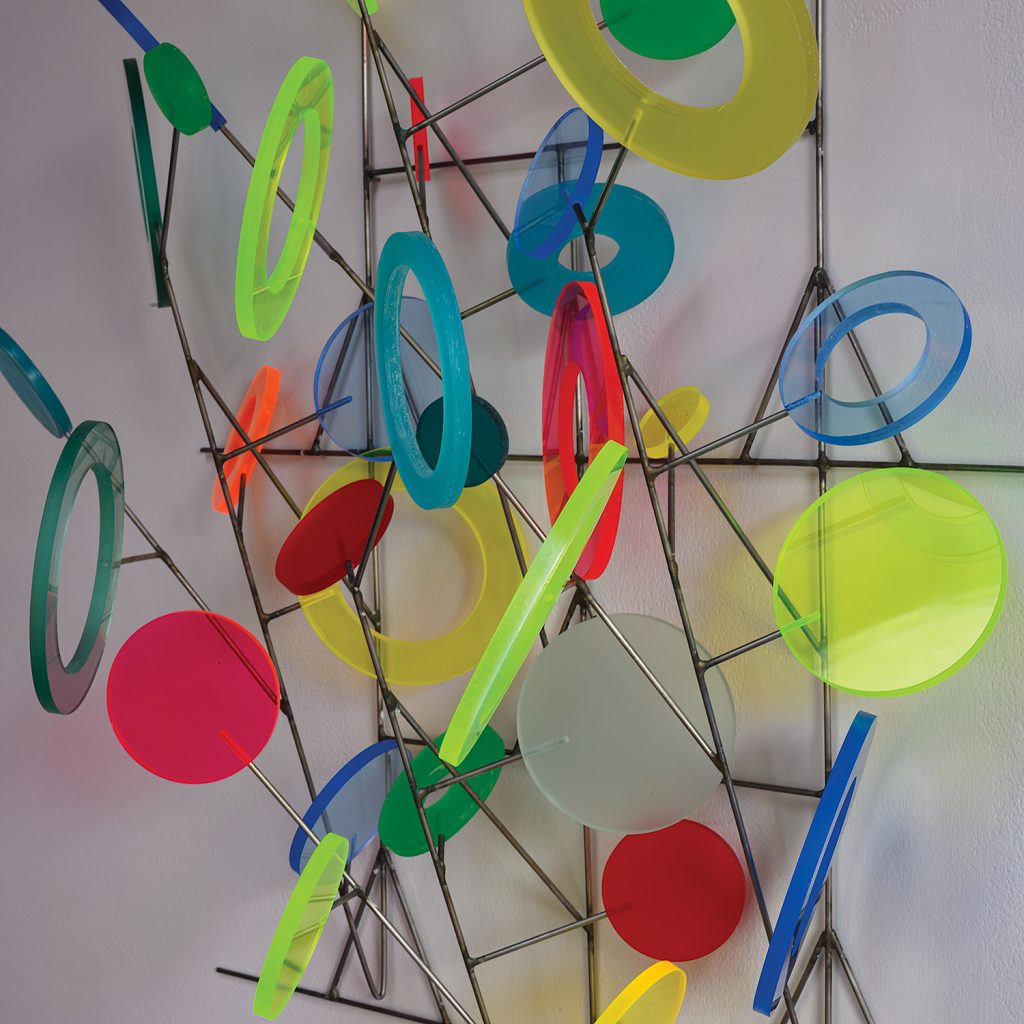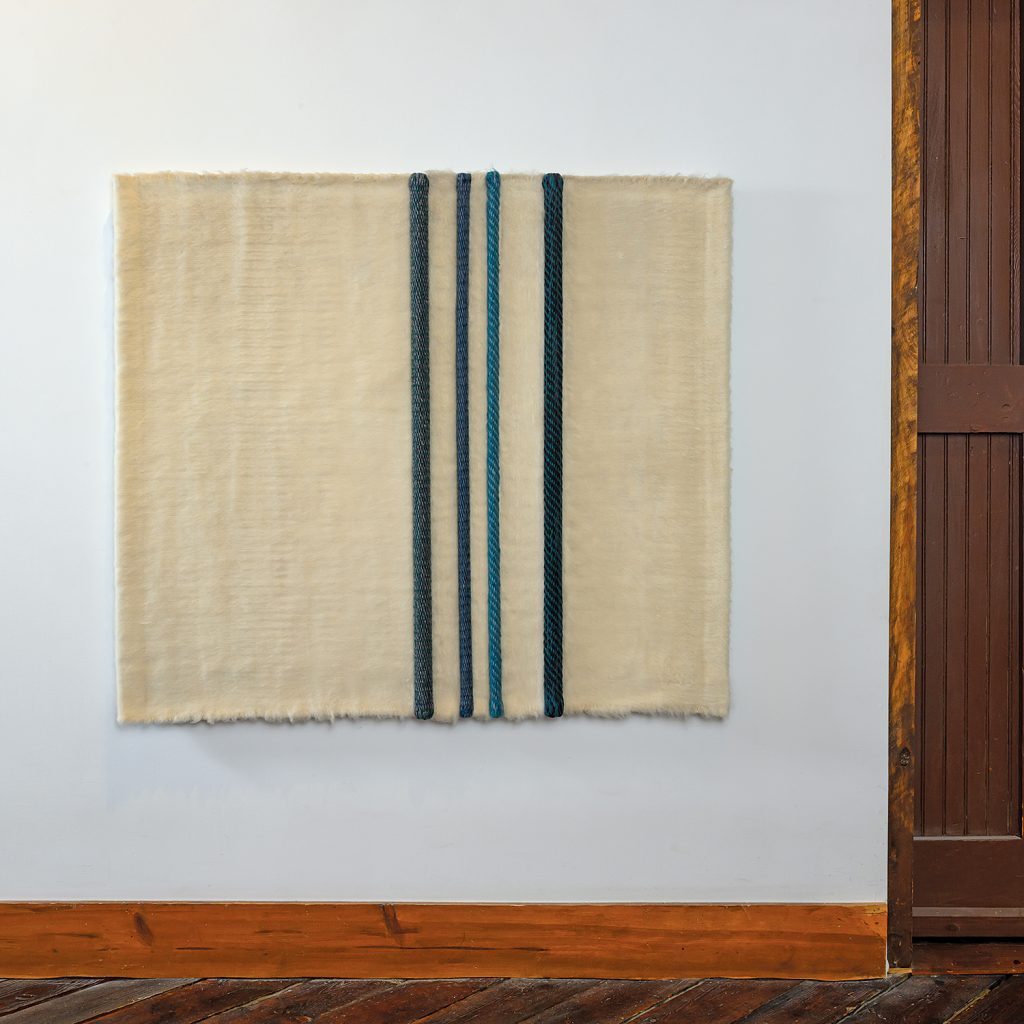Spring is right around the corner, and things are heating up over here at browngrotta arts. We’ve been hard at work preparing to get our upcoming exhibition, Discourse: art across generations and continents (May 4 – 12, 2024), in full swing! But, that’s just the beginning of the excitement. Throughout the month, we’ve also featured an array of talented artists on our ‘New This Week’ series. Now, we’re recapping everything we covered so you don’t miss a thing.
Read on for the full scoop!
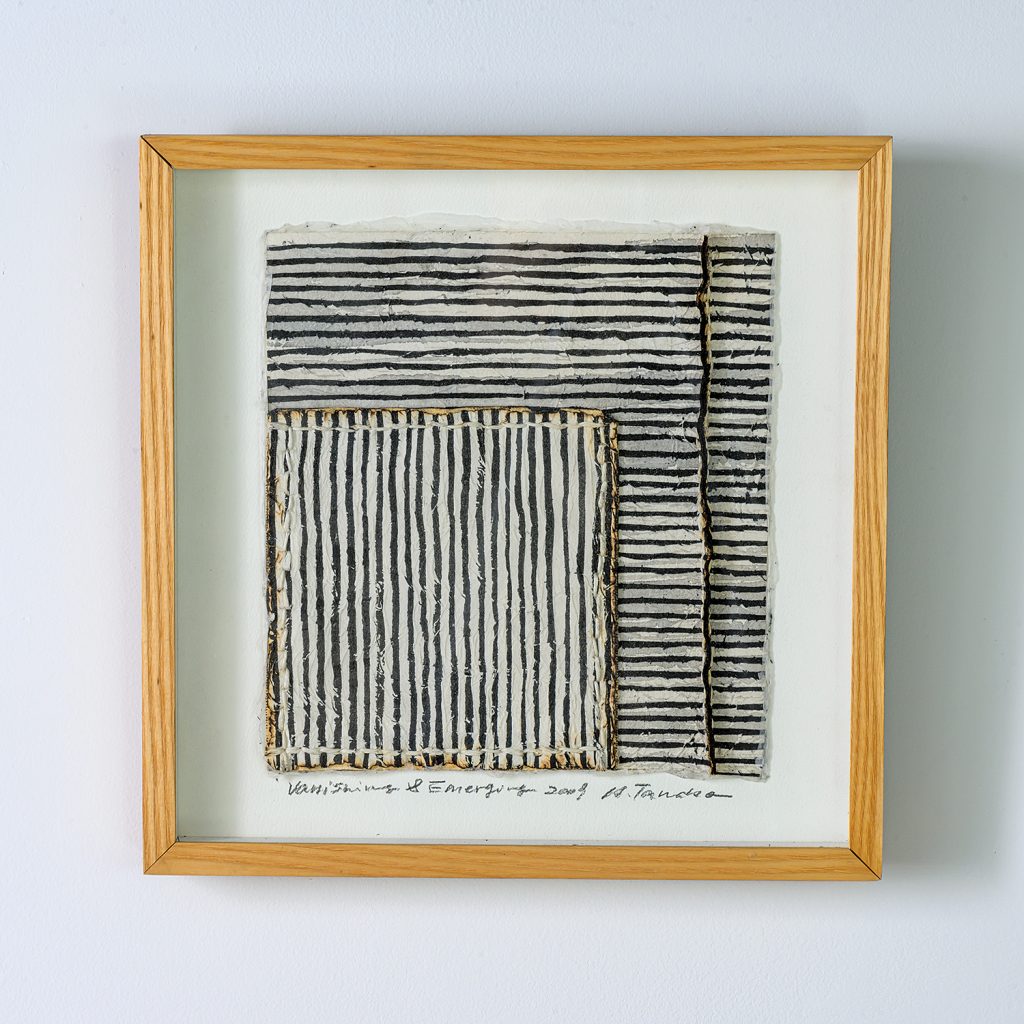
We started off the month of February by highlighted renowned Japanese artist Hideho Tanaka. Tanaka, now in his 80s, continues to explore contradictory elements in his work, using time, which he sees as an agent of change, as one guide to his aesthetic choices.
In the 70s, Tanaka taught art, while participating in solo and group exhibitions as a teacher. When asked about this experience, Tanaka explained that he worked to nurture younger generations, as artists, to think not only of soft cloth, but also less-used materials such as wood, paper pulp and stainless steel thread.
Following this important work, Tanaka also expanded his art practice in the 80s to include the creation of art textiles using paper — creating dynamic works by virtue of the material used in the works and their sense of scale.
Tanaka’s work has been exhibited extensively internationally, and he has been widely recognized for his textile work. We are honored to have been able to share pieces of his work with you all!
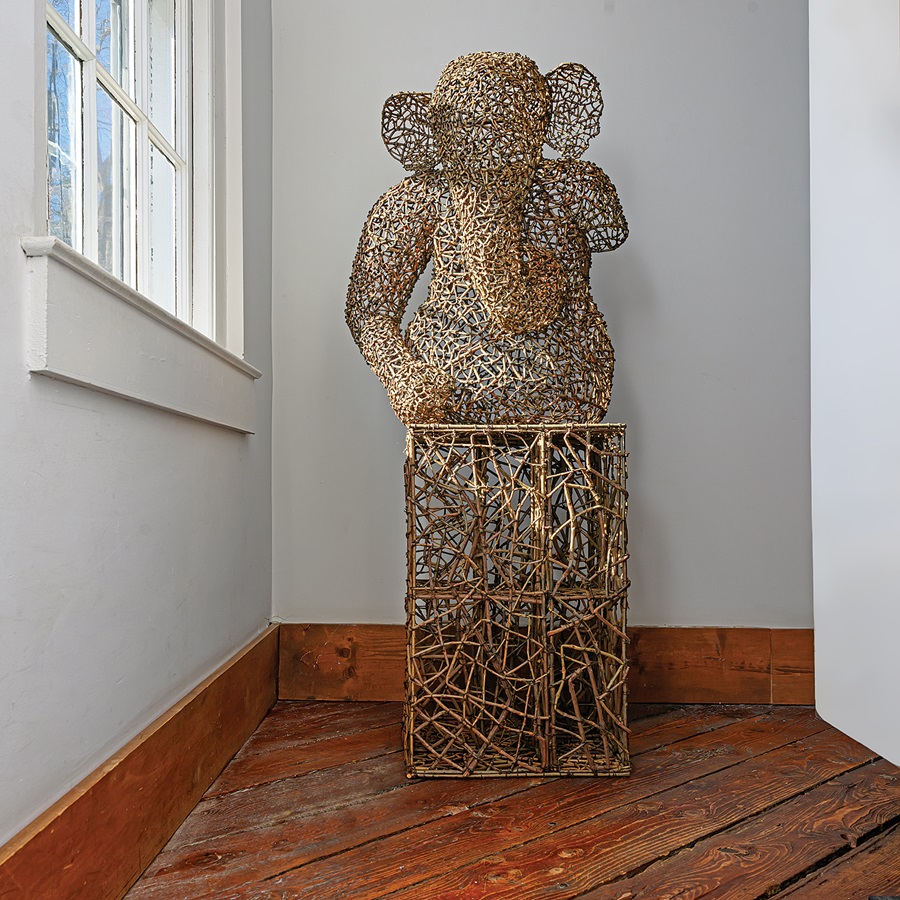
Up next in the month, we highlighted the iconic work of artist John McQueen. McQueen is recognized for his unique artwork pieces where he arranges natural materials to make vessels, sculptural figures, representational images, and text.
More specifically, he is known for his bark-covered sculptures and drawings made of sticks, much like Same Difference – Elephant the piece we highlighted this month! These sculptures and drawings lead viewers to question their relationship to the world and their view of the natural order of things.
It is no wonder why he comes so accredited for his work! We sure can’t seem to get enough of it ourselves.
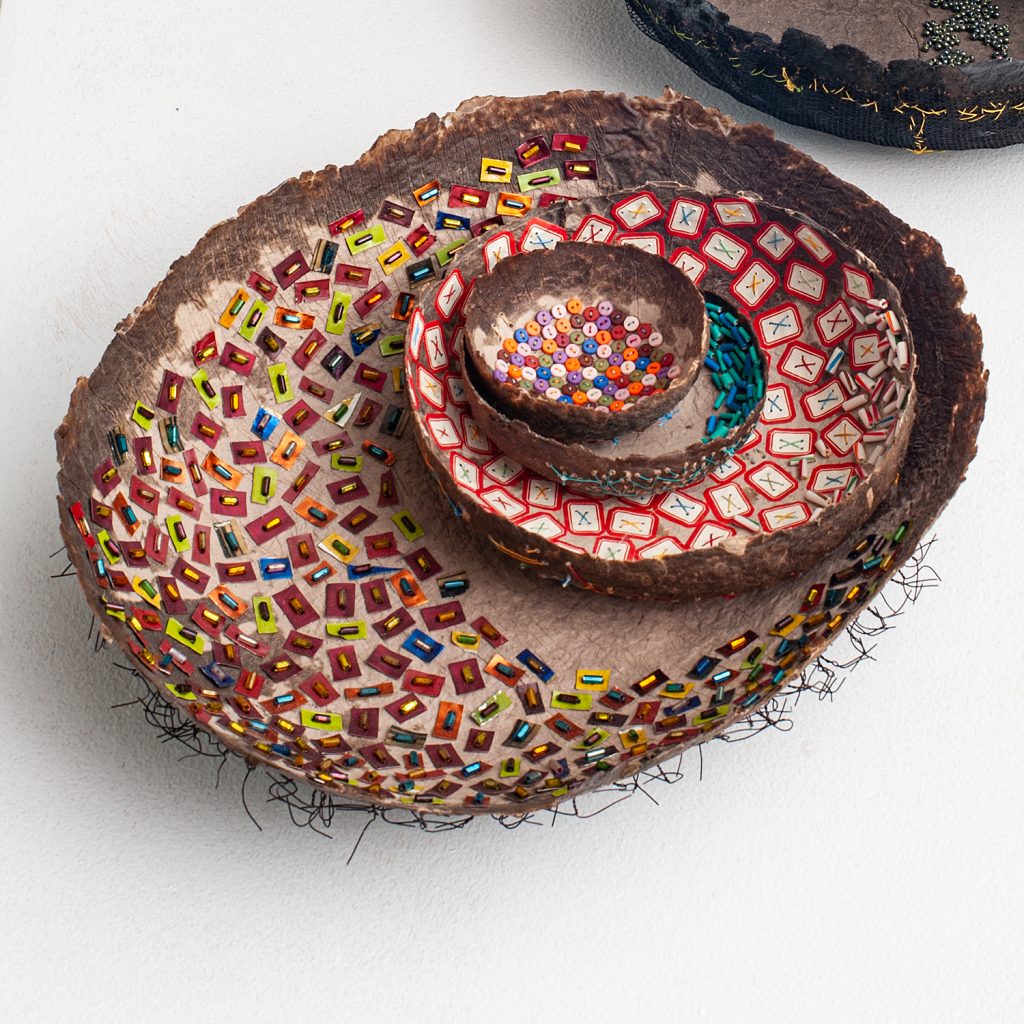
Things really started to heat up this month when we featured the colorful, creative work of artist Sylvia Seventy. Inspired in part by her studies of the art of the Pomo Indians, this California-based artist has been exploring innovative techniques in papermaking since the 70s.
Her vessels are created over molds, earthy bowl shapes, with embedded bamboo, cotton cord and sisal. From a distance, they look like ceramic or stoneware. On closer inspection, their fragility is evident.
Often, her vessels feature an accretion of items: compositions of beads, feathers, fishhooks, googly eyes, hand prints, and buttons. The walls of Seventy’s vessels contain a record number of processes, that not only mark change, but trace time. All things that we think stand as a testament to her excellence in the art world!

We concluded this series on a high note this month by featuring art from Masako Yoshida. It is no secret to us why her has garnered national acclaim and has been exhibited so extensively. When creating, Yoshida has made a point to work with natural mediums.
Throughout her career, Yoshida has also studied under renowned basketmaker Hisako Sekijima and has been part of a group exhibiting with Sekijima in Japan annually for 30 years.
We are continuously impressed by the work Yoshida creates, and we are proud to have the opportunity to exhibit her work at bga!
We hope you enjoyed our February ‘New This Week’ series! Stay tuned for some exciting months ahead with our upcoming exhibition. For more information or to register for the event now click here.

